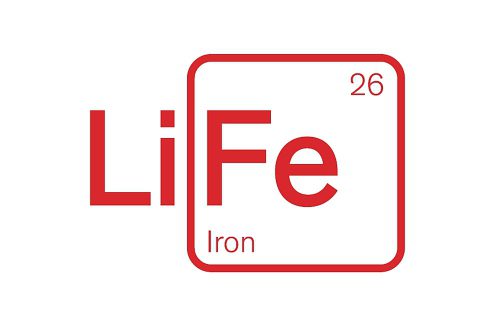Recent Survey Shows That 1 in 3 People Do Not Know Symptoms of Iron Deficiency Despite 1 in 10 Currently Suffering or Having Suffered From the Condition.
- Landmark European Iron Deficiency Survey highlights the lack of awareness of the condition, which currently impacts more people than both diabetes and chronic heart failure worldwide.
- The survey findings published to coincide with World Health Day 2016, which this year will be dedicated toraising awareness of diabetes.
- Market research measuring awareness across 7 markets, with over 1,000 surveyed in each locality, finds that 1 in 10 people suffer or have suffered from iron deficiency during the course of their lives. Out of these, 1 in 3people had not heard of iron deficiency before being diagnosed.
- Those countries with the lowest awareness of iron deficiency and iron deficiency anaemia were Portugal and France, whilst those with the highest awareness include Sweden and the UK.
One in three Europeans surveyed do not know the symptoms of iron deficiency, according to a nationwide survey commissioned by Vifor Pharma[1]. The market research, undertaken by Kantar Health, highlights a profound lack of understanding and awareness of the symptoms of both iron deficiency and iron deficiency anaemia, at a time when iron deficiency is more prevalent than diabetes and chronic heart failure worldwide[2],[3],[4].
The survey of over 10,000 adults across seven countries highlights the significant lack of awareness around the symptoms associated with the condition, despite almost 50% of sufferers confirming the condition to have a notable negative impact on their working life, and one in three describing their condition as severe or very severe at the time of diagnosis.
The summary report launched today and available on http://www.irondeficiency.com/life, also highlights how men and women share many of the concerns around iron deficiency impacting their everyday lives, such as a lack of concentration and impairment to their professional productivity. Over a third of patients surveyed also feel that iron deficiency impacts their personal relationships negatively; for example, one in four feel the condition affects their sex life.
The survey found that it took an average of over 2.5 years for the sufferers to be prescribed a treatment for iron deficiency. This is despite patients’ perceiving the condition to negatively impact their own wellbeing more than any other aspect of quality of life. For example, more than 60% of patients find that iron deficiency has a negative impact on their ability to concentrate and half stated that it stopped them from being active.
Professor Toby Richards, Professor of Surgery at University College London, commented:
“Published on World Health Day, this report highlights that despite iron deficiency affecting a larger population than many other conditions, the lack of understanding and recognition is far greater. It also clearly illustrates that there may be a large undiagnosed population who are unaware of the symptoms caused by iron deficiency. With half of those sufferers who did not experience any symptoms discovering their condition by accident during a visit to their doctor, we must now look to raise awareness of iron deficiency as a European-wide issue.
The situation is more extreme in those unwell or with illness where iron deficiency and anaemia can affect a third of people coming into hospital, and this is associated with a longer hospital stay and worse outcome.“
Symptoms not widely known
The report also revealed that the main symptom that drove those to consult a health care professional was tiredness/fatigue, which was mentioned as the first symptom experienced, followed by pale skin and poor attention.
Of those 6,986 people surveyed and aware of iron deficiency, 64% recognised tiredness/fatigue as the most common symptom, which can be attributed to iron deficiency. This was followed by suffering symptoms including; pale skin (37%), headaches (21%), poor attention (20%) and (19%) brittle (poor condition) of nails respectively. Women were found to be more concerned about the cognitive, as well as physical impact of the condition, which can include the paleness of skin, brittle nails and hair loss[5]. However, the survey also identified that many symptoms were not recognised or known by those surveyed, these include; mouth ulcers, infection, sore tongue, restless legs syndrome, cold intolerance and craving non-food items.
Symptoms and
Comorbidities Description
Mental Feeling mentally tired, irritable, dizzy or losing
fatigue concentration quickly
Mouth ulcers Sore, white patches on the inside of mouth or sore, red,
flaky cracks at one or both sides of mouth
Infection May cause more infections than usual, such as coughs and colds
Shortness of Reduced physical capacity
breath
Craving Craving to eat ice or non-food items such as clay, dirt, ash
non-food and starch
Restless legs A disturbing need to move legs even when resting
Hair loss Losing clumps of hair or more hair than normal
Headaches Repeated headaches
Sore tongue Affects the surface of the tongue making it feel sore or
gives a dry mouth
Paleness Most noticeable on the face, nails, inner mouth, and lining of eyes
Physical Feeling physically tired
fatigue /
exhaustion
Brittle nails Chip and crack easily
Cold Cold hands and/or feet may mean that there is not enough
intolerance oxygen being delivered in the blood
Table 1: General symptoms and perceptions around iron deficiency. Adapted from Clark (2008)
Professor Toby Richards continued: “This survey further illustrates that this is a condition that is insidious. Iron deficiency is one of the most frequent metabolic disorders at a European level, despite being easy to diagnose and treat. Although clinical studies show that treating iron deficiency improves peoples‘ quality of life, it remainsunderlooked and is often ignored. Given its prevalence and impact on its sufferers, it should not be left untreated.“
Help keep news FREE for our readers
Supporting your local community newspaper/online news outlet is crucial now more than ever. If you believe in independent journalism, then consider making a valuable contribution by making a one-time or monthly donation. We operate in rural areas where providing unbiased news can be challenging. Read More About Supporting The West Wales Chronicle





















